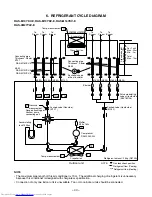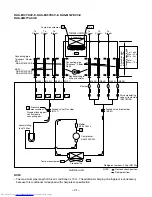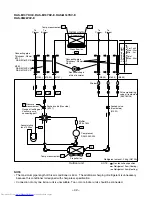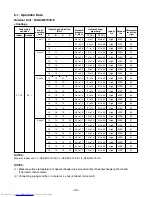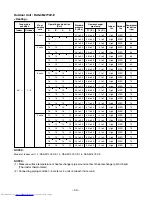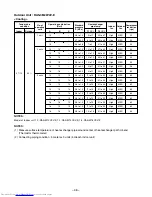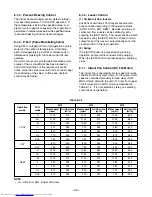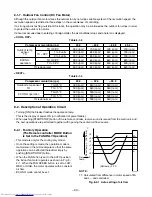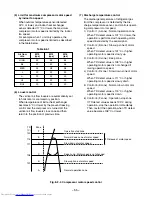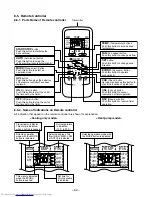
– 50 –
8. OPERATION DESCRIPTION
8-1. Outline of Air Conditioner Control
This air conditioner is a capacity-variable type air
conditioner, which uses DC motors for the indoor fan
motors and the outdoor fan motor. And the capacity-
proportional control compressor which can change
the motor speed in the range from 15 to 90 rps is
mounted. The DC motor drive circuit is mounted to
the indoor unit. The compressor and the inverter to
control fan motor are mounted to the outdoor unit.
The entire air conditioner is mainly controlled by the
indoor unit controller.
The indoor unit controller drives the indoor fan motor
based upon command sent from the remote control-
ler, and transfers the operation command to the
outdoor unit controller.
The outdoor unit controller receives operation
command from the indoor unit side, and controls the
outdoor fan and the pulse modulating valve.
Besides, detecting revolution position of the com-
pressor motor, the outdoor unit controller controls
speed of the compressor motor by controlling output
voltage of the inverter and switching timing of the
supply power (current transfer timing) so that motors
drive according to the operation command.
And then, the outdoor unit controller transfers
reversely the operating status information of the
outdoor unit to control the indoor unit controller.
As the compressor adopts four-pole
brushless DC motor, the frequency of the
supply power from inverter to compressor
is two-times cycles of the actual number of
revolution.
(1) Role of indoor unit controller
The indoor unit controller judges the operation
commands from the remote controller and
assumes the following functions.
• Judgment of suction air temperature of the
indoor heat exchanger by using the indoor
temp. sensor.
• Temperature setting of the indoor heat ex-
changer by using heat exchanger sensor
(Prevent-freezing control)
• Louver motor control
• Indoor fan motor operation control
• LED display control
• Transferring of operation command signal
(Serial signal) to the outdoor unit
• Reception of information of operation status
(Serial signal including outside temp. data) to
the outdoor unit and judgment/display of error
Operations followed
to judgment of
serial signal from
indoor side.
(2) Role of outdoor unit controller
Receiving the operation command signal (Serial
signal) from the indoor controller, the outdoor
unit performs its role.
• Compressor operation
control
• Operation control of
outdoor fan motor
• P.M.V. control
• Detection of inverter input current and current
release operation
• Over-current detection and prevention opera-
tion to transistor module (Compressor stop
function)
• Compressor and outdoor fan stop function
when serial signal is off (when the serial signal
does not reach the board assembly of outdoor
control by trouble of the signal system)
• Transferring of operation information (Serial
signal) from outdoor unit to indoor unit
• Detection of outdoor temperature and opera-
tion revolution control
• Defrost control in heating operation (Temp.
measurement by outdoor heat exchanger and
control for 4-way valve and outdoor fan)
(3) Contents of operation command signal (Serial
signal) from indoor unit controller to outdoor unit
controller
The following three types of signals are sent
from the indoor unit controller.
• Operation mode set on the remote controller
• Compressor revolution command signal
defined by indoor temperature and set tem-
perature
(Correction along with variation of room
temperature and correction of indoor heat
exchanger temperature are added.)
• For these two types of signals ( [Operation
mode] and [Compressor revolution] ), the
outdoor unit controller monitors the input
current to the inverter, and performs the
followed operation within the range that current
does not exceed the allowable value.
• Temperature of indoor heat exchanger by
indoor heat exchanger sensor
(Minimum revolution control)





